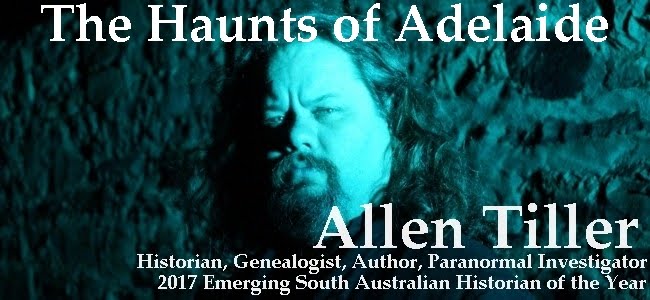Red Triangle Day
 In an effort to raise money for Australian soldiers overseas during World War One, the Y.M.C.A (Young Men’s Christian Association) began the Red Triangle campaign in 1917.
In an effort to raise money for Australian soldiers overseas during World War One, the Y.M.C.A (Young Men’s Christian Association) began the Red Triangle campaign in 1917.The campaign spanned all of Australia and rolled out through South Australia over many months.
In Adelaide, the Adelaide Citizens Committee became involved in the fund-raising effort and through the dedication of 700 female volunteers, raised over two and half thousand pounds in one day on May 24th, 1917.
This was achieved by closing off sections of Rundle Street and Gawler Place and holding a market. A procession of troops, bands and decorated cars also added to the atmosphere of the day.
 As the State began to embrace the Red Triangle Day appeal, it was decided that its official “day” would be August 31st across the State.
As the State began to embrace the Red Triangle Day appeal, it was decided that its official “day” would be August 31st across the State.A gala day was held in Mount Barker in August 1917, which became an all-night fund-raising event held at The Mount Barker Town Hall.
Kapunda celebrated Red Triangle Day on September 1st, 1917. The Kapunda celebration featured a button unique to their celebration, which is extremely rare and collectable today.
Peterborough (then known as Petersburg) celebrated in September 1917, proudly supported by the Burra Ladies Band. This was the first time a “Lady’s Band” had ever played a concert in Peterborough. This led to large crowds gathering in the Town Hall later in the day to hear the ladies sing, while local ladies sold pins and flowers to raise money for the Y.M.C.A.
 Stansbury, on the Yorke Peninsula, celebrated Red Triangle day with a fete on August 31st, 1917.
Stansbury, on the Yorke Peninsula, celebrated Red Triangle day with a fete on August 31st, 1917.Through the cooperation of the State War Council, The Minister of Education and the Children’s Patriotic Fund a fund-raising competition in South Australian schools raised money for the Y.M.C.A. Red Triangle Day appeal. The reward for the winning school was a large banner proclaiming their effort and the honour of knowing they were supporting the Australian war effort overseas.
The Red Triangle appeal carried over into 1918, with Unley, in June 1918, being canvassed with a door to door sale of a unique Red Triangle pin created for the day. A small gathering of locals also attended a small musical show at the Unley City Hall headquarters.
In May 1919, Red Triangle Day continued in Port Pirie with a football match between the Smelter Imperials and the Y.M.C.A.
The August 1917 appeal in Australia raised £159,037 28 (that’s around $14,198,000 in today’s money).
Researched and written by Allen Tiller © 2018
References
1917 'RED TRIANGLE DAY', The Mount Barker Courier and Onkaparinga and Gumeracha Advertiser (SA: 1880 - 1954), 3 August, p. 2. , viewed 30 Dec 2018, http://nla.gov.au/nla.news-article147702293
Advertiser (Adelaide, SA: 1889 - 1931), Saturday 21 July 1917, page 8
1917 'Y.M.C.A. WAR WORK', Daily Herald (Adelaide, SA: 1910 - 1924), 1 August, p. 8. , viewed 30 Dec 2018, http://nla.gov.au/nla.news-article124859553
1917 'RED TRIANGLE DAY', Daily Herald (Adelaide, SA: 1910 - 1924), 2 August, p. 3. , viewed 30 Dec 2018, http://nla.gov.au/nla.news-article124859820
1917 'THE COUNTRY.', The Register (Adelaide, SA: 1901 - 1929), 4 August, p. 5. , viewed 30 Dec 2018, http://nla.gov.au/nla.news-article60466404
1917 'RED TRIANGLE DAY APPEAL', Chronicle (Adelaide, SA: 1895 - 1954), 4 August, p. 34. , viewed 30 Dec 2018, http://nla.gov.au/nla.news-article87607153
1917 'Advertising', The Mail (Adelaide, SA: 1912 - 1954), 4 August, p. 3. , viewed 30 Dec 2018, http://nla.gov.au/nla.news-article64042545
1918 'ONLEY RED TRIANGLE DAY.', Daily Herald (Adelaide, SA: 1910 - 1924), 8 June, p. 4. , viewed 30 Dec 2018, http://nla.gov.au/nla.news-article124550031
1919 'RED TRIANGLE DAY.', Recorder (Port Pirie, SA: 1919 - 1954), 28 May, p. 2. , viewed 30 Dec 2018, http://nla.gov.au/nla.news-article95415489
1917 'RED TRIANGLE DAY.', Petersburg Times (SA: 1887 - 1919), 5 October, p. 3. , viewed 30 Dec 2018, http://nla.gov.au/nla.news-article109504664









